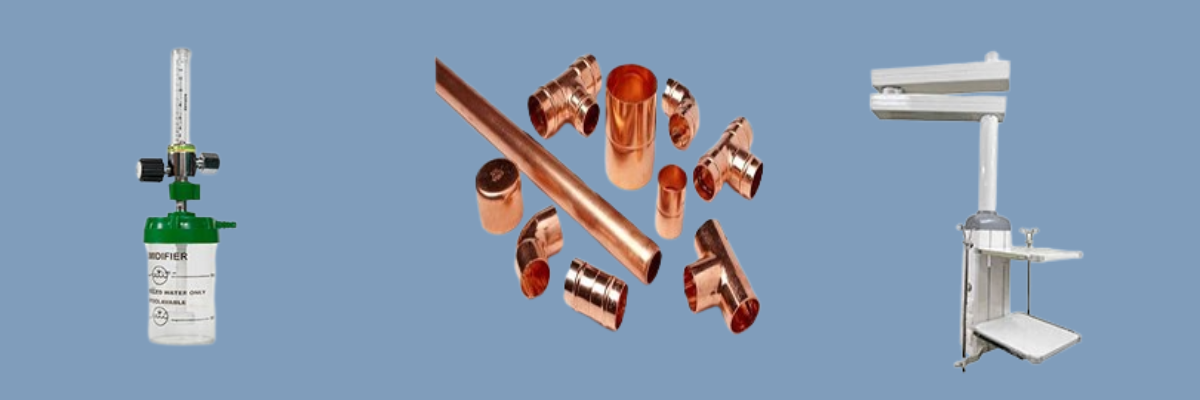Why Every Modern Hospital Needs a Medical Gas Pipeline System

Medical Gas Pipeline System In today’s fast-paced world of healthcare, the demands placed on hospitals have grown exponentially. As technologies advance and patient needs become more complex, hospitals must ensure that they are equipped with reliable, efficient systems that enhance patient care and safety. One such essential system that is often overlooked is the Medical Gas Pipeline System (MGPS).
Enhanced Patient Safety
Patient safety is the cornerstone of healthcare delivery. A well-designed medical gas pipeline system ensures that oxygen, nitrous oxide, and other essential gases are delivered consistently and safely throughout the hospital. MGPS reduces the risk of errors associated with gas delivery, such as the mix-up of gas cylinders, by providing a centralized and organized distribution system. This not only improves patient outcomes but also strengthens the hospital’s reputation for safety and quality care.
Operational Efficiency
Modern hospitals are busy environments where time is of the essence. The use of a medical gas pipeline system allows for continuous and uninterrupted gas supply, meaning staff can quickly access the necessary gases for patient care without the delays often associated with traditional gas cylinders. This streamlined workflow minimizes valuable time lost while establishing and ensuring the availability of gas, allowing healthcare professionals to focus more on patient care rather than logistical challenges.
Cost-Effectiveness
While the initial investment in a medical gas pipeline system might seem significant, the long-term cost savings can be substantial. Traditional gas delivery methods, such as using gas cylinders, often come with hidden costs, including storage, frequent rentals, and human resources for handling and changing out the cylinders. In contrast, a piped medical gas system reduces these costs by minimizing wastage, and requiring less manpower, thereby allowing hospitals to allocate their resources more efficiently.
Space Optimization
Hospital real estate is precious and often limited. Medical gas pipeline systems efficiently use space by eliminating the need for large gas storage rooms and bulky gas cylinder racks. Instead, the gases are stored in centralized bulk tanks or liquid storage systems, freeing up space for other essential hospital operations and patient services. A more organized and spacious environment can significantly enhance workflow and overall hospital functionality.
Compliance and Standardization
Healthcare facilities must comply with numerous regulations and standards governing the delivery of medical gases. MGPS is designed to meet these strict requirements, ensuring that hospitals adhere to safety standards set by organizations like the National Fire Protection Association (NFPA) and the American Society of Sanitary Engineering (ASSE). Implementing a medical gas pipeline system makes it easier for hospitals to remain compliant, thereby avoiding potential legal and financial penalties.
Scalability for Future Needs
As patient populations grow and healthcare demands evolve, hospitals must be prepared to adapt. A medical gas pipeline system can be designed to scale with a facility’s needs. Whether a hospital is expanding or incorporating new technologies and procedures, an MGPS can be modified and upgraded easily to accommodate increased capacity and new requirements. This adaptability makes it a strategic investment for hospitals looking towards the future.
Conclusion
In conclusion, the implementation of a medical gas pipeline system is no longer a luxury but a necessity for modern hospitals. With its benefits including enhanced patient safety, operational efficiency, cost-effectiveness, space optimization, compliance, scalability, and improved emergency preparedness MGPS serves as the backbone of a hospital’s gas delivery system, ultimately improving patient care. Hospitals aiming to provide the highest standard of care must prioritize the installation and maintenance of an efficient medical gas pipeline system. It’s time to invest in infrastructure that supports the future of healthcare one that is safe, efficient, and patient-centered.







